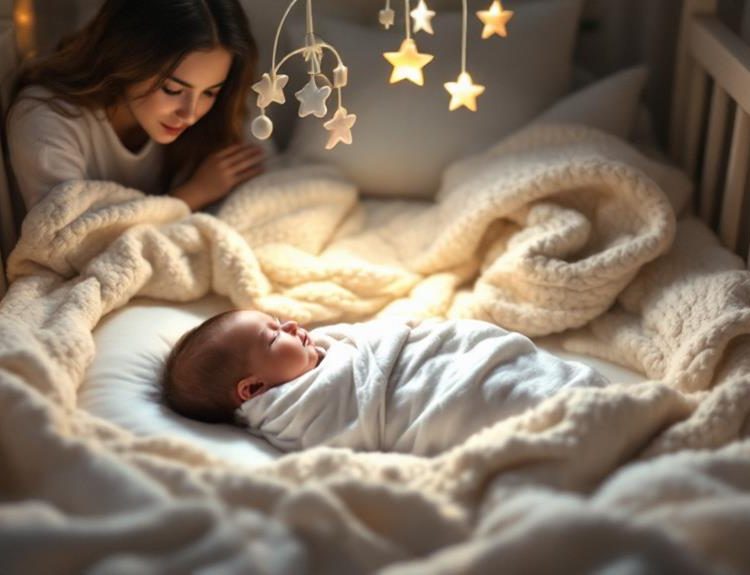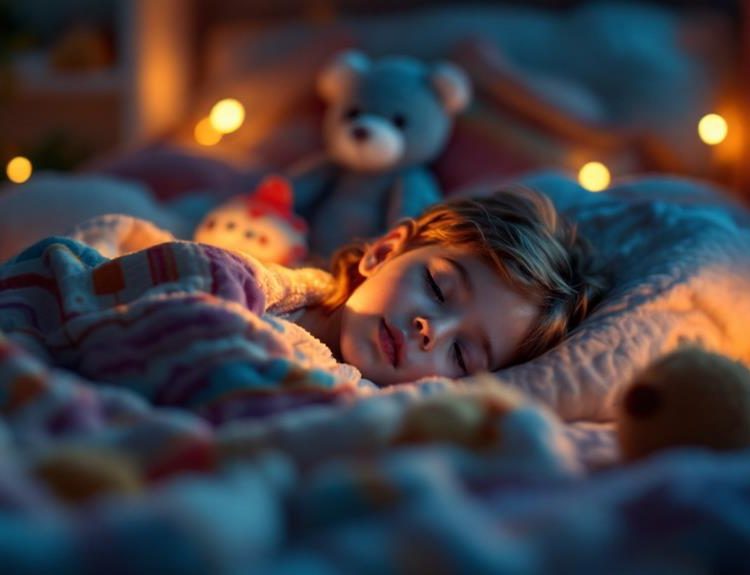As a parent, you might wonder when your baby will truly start to see the world around them. In those early weeks, their vision is quite limited, focusing mainly on objects that are just a short distance away. However, as time passes, significant changes occur that you won't want to miss. Understanding these milestones can help you support your baby's vision development effectively. But how can you tell if they're hitting those crucial markers, and what should you do if they're not? Let's explore the key stages of baby vision together.
Understanding Baby Vision Basics
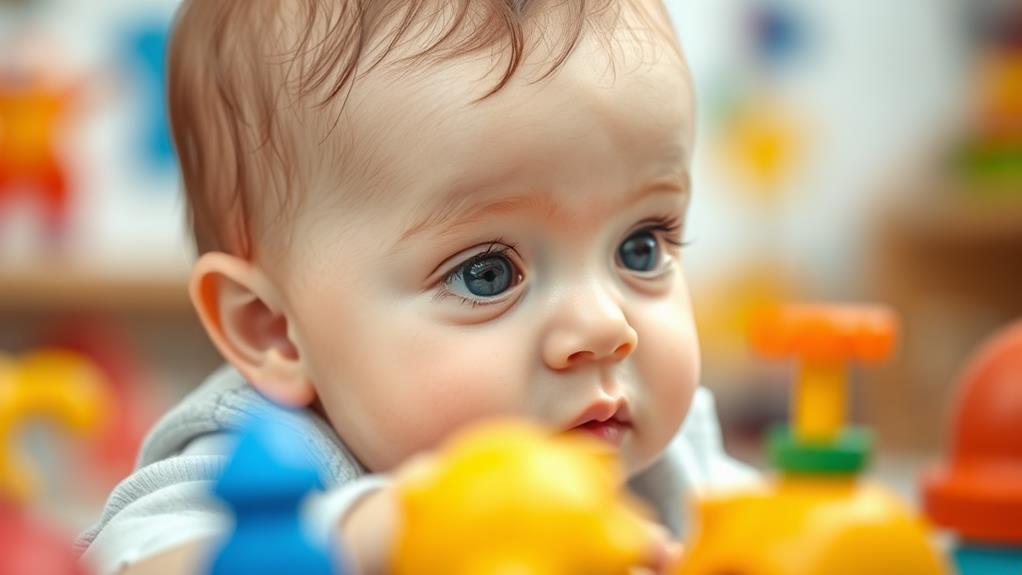
From birth, your baby's vision is a fascinating journey of development. Right from those early moments, their eyes are busy taking in the world, even if they can't see it clearly yet. Initially, your little one can only focus on objects about 8 to 12 inches away, which is just perfect for snuggling up close to you. Their eyes might wander and cross, but that's completely normal as they learn to work together.
As weeks go by, you'll notice gradual changes. By the time they're about two months old, your baby starts to track moving objects, showing more interest in colorful toys and faces. This is an exciting milestone, as they begin to connect with the people around them.
By three months, most babies can see a bit farther and recognize familiar faces, bringing a smile to both of you. Understanding the basics of baby vision helps you appreciate these milestones.
Newborn Vision Capabilities
Newborns have unique vision capabilities that set the stage for their visual development. At birth, your baby can see, but their vision is quite blurry. They can focus on objects about 8 to 12 inches away, which is perfect for gazing at your face during feedings.
Newborns are especially attracted to high-contrast colors, like black and white, as these patterns are easier for them to detect. While their color vision is limited at this stage, it begins to develop over the first few months. You'll notice that they prefer bold patterns and shapes, helping them engage with their environment.
Newborns also have a natural reflex to follow moving objects, so waving a toy in front of them can capture their attention and encourage visual tracking.
Interestingly, their peripheral vision isn't fully developed yet. As a result, they might seem to focus only on what's directly in front of them. During this time, it's essential to create a visually stimulating environment with contrasting items to support their developing sight.
Vision Milestones by Age
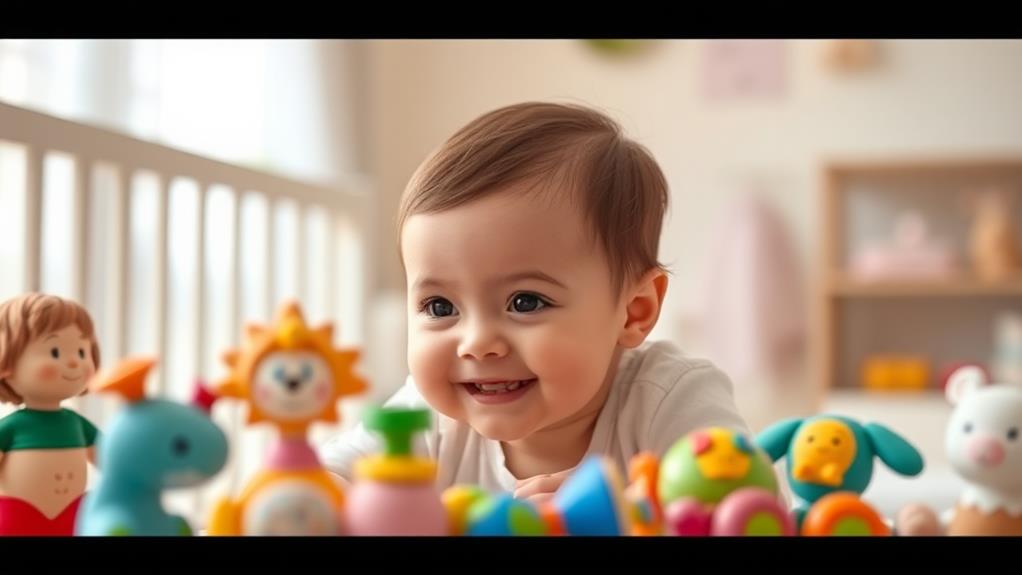
As your baby grows, you'll notice significant changes in their vision development at various milestones.
By around 1 month, your little one can focus on objects about 8 to 12 inches away. This is the perfect distance for gazing at your face during feedings!
By 2 months, they start following moving objects with their eyes, which you might find fascinating to watch.
At 3 to 4 months, your baby's vision becomes sharper, and they'll be able to see colors more vividly. They can even recognize familiar faces!
How Babies See Colors
Many parents wonder how their babies perceive colors, and it's quite fascinating! When babies are born, their color vision is quite limited. Initially, they can only see shades of black, white, and gray.
As they grow, usually by around three months, they start to distinguish between some colors like red and green. By six months, most babies can see a broader spectrum of colors, including blues and yellows.
This development occurs because their eyes and brains are still maturing. The cones in their eyes, responsible for color detection, become more functional over time. By the time your baby is around one year old, they'll be able to see colors similarly to how adults do, although their preferences might differ.
Babies often show a preference for bright colors and high-contrast patterns, which can capture their attention more effectively.
Understanding how your baby perceives colors can help you choose toys and books that engage them. Brightly colored items may stimulate their developing vision and encourage their curiosity.
Importance of Visual Stimulation
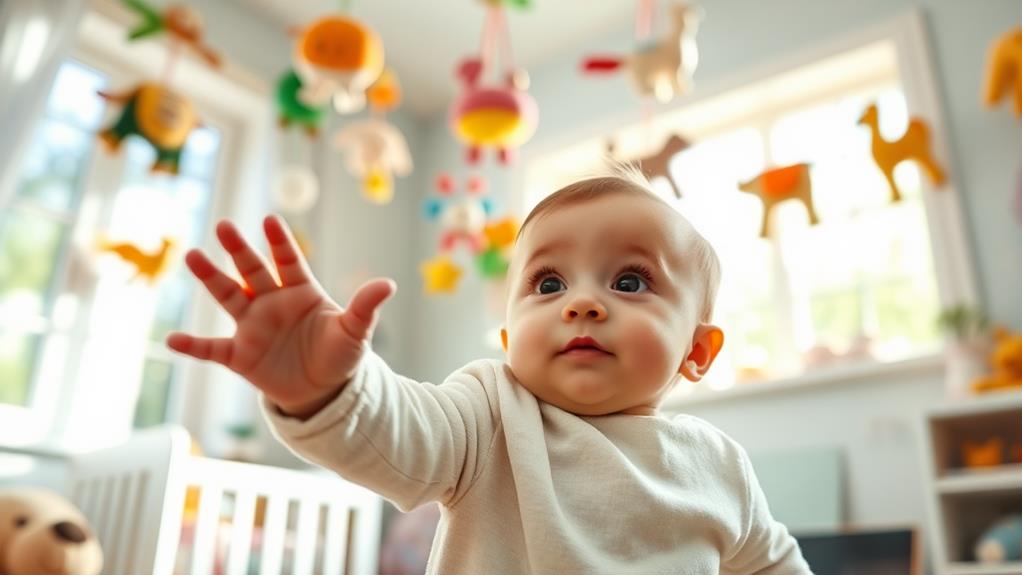
How crucial is visual stimulation for your baby's development? Well, it plays a vital role in shaping their vision and cognitive skills.
When your baby sees different colors, shapes, and movements, their brain starts to make important connections. This process helps them understand their surroundings better, which is essential for learning and growth.
You can easily provide visual stimulation by using colorful toys, books with bright images, or even simple household objects.
Hanging a mobile above their crib can also capture their attention and encourage them to track moving objects with their eyes.
As your baby interacts with these visual stimuli, they're not just observing; they're actively engaging their brain, which boosts their development.
Signs of Vision Development
Visual stimulation not only enhances your baby's cognitive skills but also signals the stages of their vision development. As you observe your little one, you'll notice several signs that indicate their eyesight is improving.
In the first few weeks, your baby may only see blurry shapes and high-contrast colors. By around two months, they'll start tracking moving objects with their eyes, showing curiosity about their surroundings. You might see them gazing at your face or following a toy as you move it side to side.
By four months, your baby should recognize familiar faces and respond with smiles. This is a great sign of their growing visual awareness!
As they approach six months, they'll likely show interest in items at a distance and might even reach for objects, demonstrating hand-eye coordination. Around this age, you'll also notice them exploring textures and colors, which helps enhance their visual skills.
Common Vision Issues in Infants
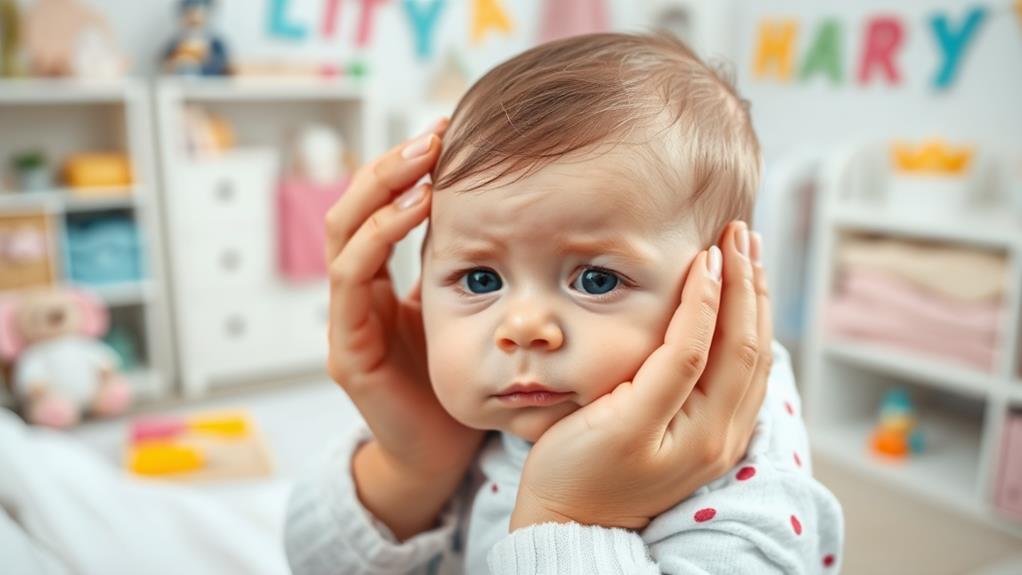
Around 1 in 200 infants may experience some form of vision issue, highlighting the importance of monitoring your baby's eye health. Early detection is key to ensuring your little one develops healthy vision.
Some common vision problems include strabismus, where the eyes don't align properly, leading to crossed or wandering eyes. This can affect depth perception and coordination.
Another concern is congenital cataracts, which can cloud the lens of the eye, obstructing vision. If your baby seems to have a cloudy appearance in their eyes, it's worth consulting a pediatrician.
Amblyopia, often called "lazy eye," is another issue that can arise, where one eye doesn't develop normal vision. This can happen if there's a significant difference in vision between the two eyes.
Lastly, refractive errors like nearsightedness or farsightedness can also occur in infants. Signs might include squinting or difficulty tracking objects.
Supporting Eye Development
While you may not realize it, there are several simple ways you can support your baby's eye development right from the start. First, make sure to provide plenty of visual stimulation. Bright colors, contrasting patterns, and simple toys can captivate your baby's attention and encourage them to focus.
Hang a mobile above their crib or lay them on a colorful play mat to engage their visual senses.
Next, spend time having face-to-face interactions with your baby. Your facial expressions, movements, and voices aren't only comforting but also help them learn to track objects with their eyes. As they grow, encourage them to follow moving objects, like a toy or your finger, to strengthen their eye coordination.
Additionally, ensure your baby gets plenty of tummy time. This position helps them develop the muscles necessary for better eye movement and coordination.
Lastly, keep the environment well-lit but avoid direct sunlight, which can be harsh on their delicate eyes.
When to Consult a Specialist
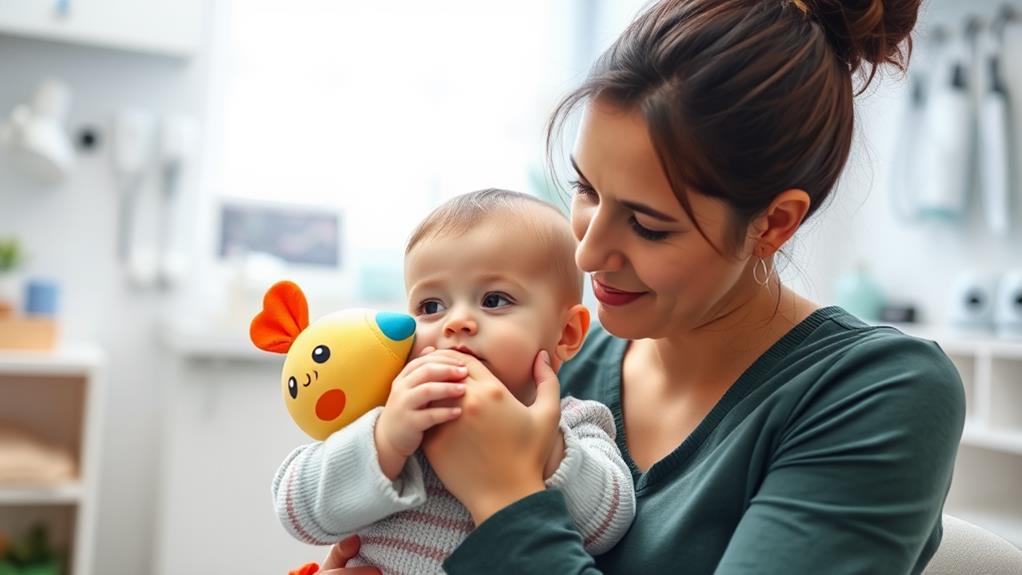
If you notice any concerns about your baby's vision, it's essential to consult a specialist promptly. Early detection of vision problems can significantly impact your child's development and overall quality of life.
Keep an eye out for warning signs like crossed eyes, excessive squinting, or difficulty tracking objects. If your baby seems uninterested in visual stimuli or frequently rubs their eyes, these could be red flags.
Most pediatricians recommend a vision screening during your child's well-child visits, but if you have any concerns outside those appointments, don't hesitate to seek a specialist. It's better to be proactive than to wait and see.
Typically, children should have their first comprehensive eye exam by age one, but if you suspect any issues, you shouldn't wait. Consulting an optometrist or ophthalmologist who specializes in pediatric care can provide you with peace of mind.



